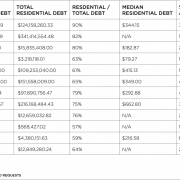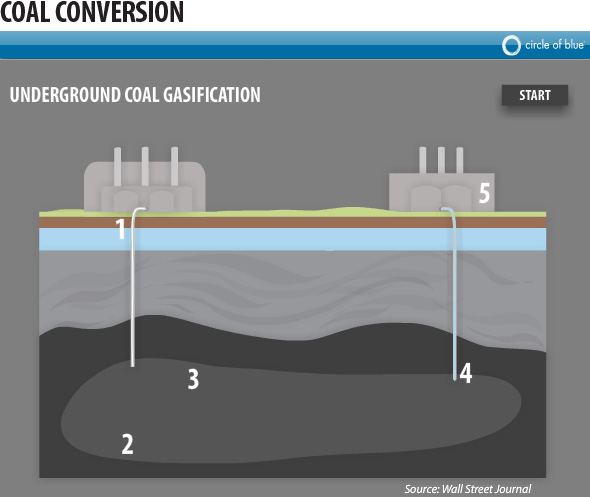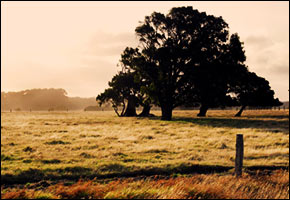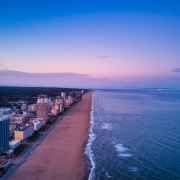Fish Screens Are Part of The Answer to Saving Sacramento River Salmon
Out of social confrontation over water and fish in California comes a fish story worth telling.
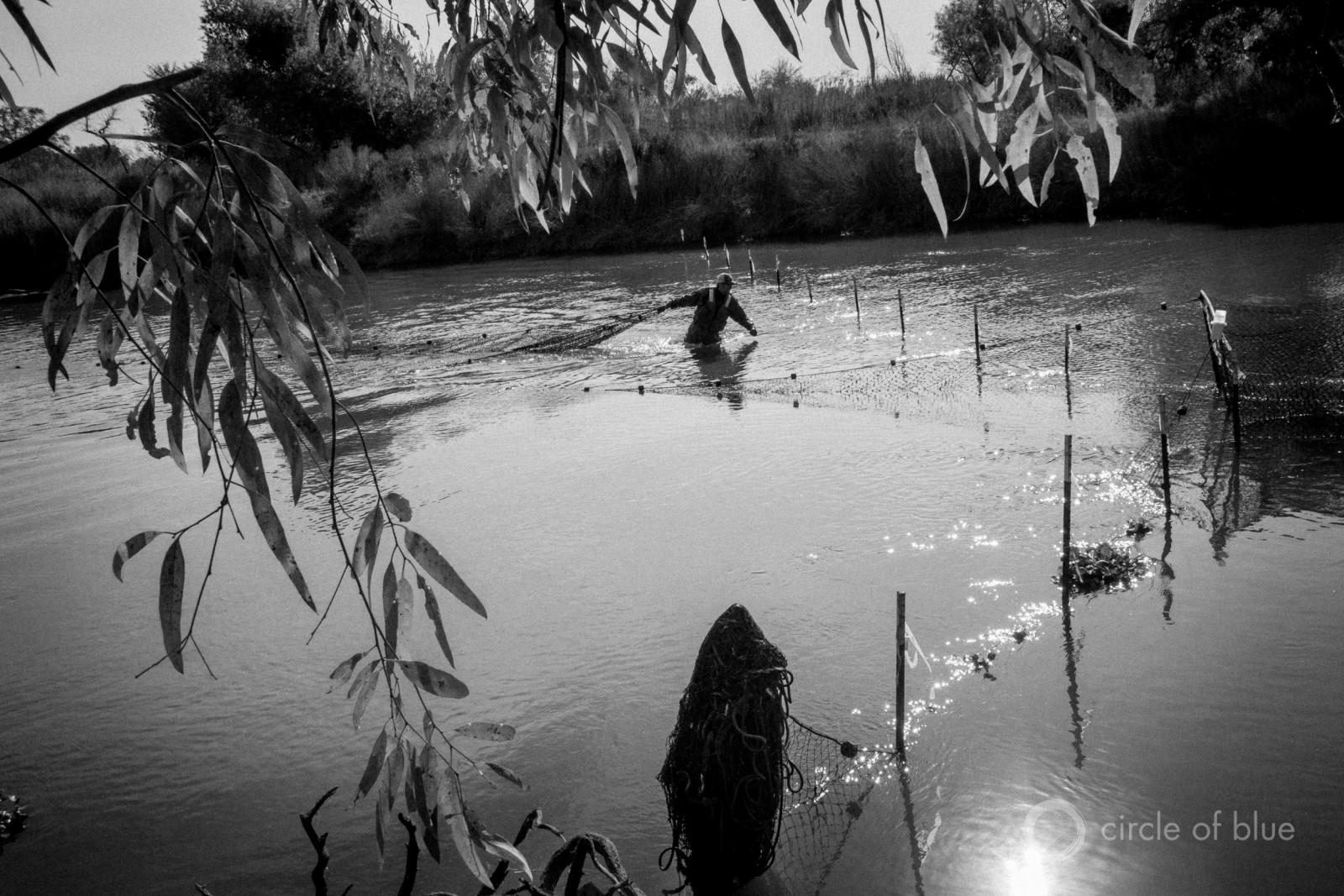
Bureau of Reclamation Fisheries Biologist Zak Sutphin checks a fish trap set in the San Joaquin River near the town of Newman in California’s Central Valley. The trap, also known as a “Fyke Net”, is used to catch salmon so they can be transported upstream by truck, bypassing obstacles, on their way to their historic spawning grounds near Fresno in the Sierra Nevada mountains. Photo © Matt Black / Circle of Blue
By Keith Schneider, Circle of Blue
MAXWELL, Ca. — Before the founders of the Family Water Alliance began installing metal screens at the end of the big pipes that draw water from the Sacramento River to irrigate Colusa County’s rice and vegetable fields, seasonal salmon runs often included sizable helpings of fresh fish flopping in the brown dirt of farm furrows. The pumps that transported water were powerful enough to suck migrating fish into the pipes and toss them out the other end, typically startled and very much alive.
Debra Lemburg, the project manager who has worked in the water alliance’s salmon fish screen program since 1999, said it is rare that salmon end up in the fields anymore. Her group raised over $US 13 million from state and federal wildlife agencies over the last two decades and installed 40 fish screens on the ends of irrigation water intake pipes on the Sacramento River and the Feather River, its principal tributary.
The lessons here are easy to explain. Farmers can pump water from the river. Fish are protected. They are not being killed.”
–Debra Lemburg, project manager
Family Water Alliance
Hundreds more fish screens have been installed on northern California’s other salmon spawning rivers. The result is that in the struggle to sustain California’s imperiled chinook, coho, and steelhead fishery, hundreds of thousands of spawning adults, newly hatched fry, and migrating juveniles are not perishing in irrigation systems.
“The lessons here are easy to explain,” said Lemburg in an interview with Circle of Blue. “Farmers can pump water from the river. Fish are protected. They are not being killed.”
Salmon In Trouble
Drought, warming water, big dams that block spawning grounds, and contaminated runoff from cities and farmland are said by wildlife researchers to be the primary causes of salmon deaths in the Sacramento River. Installing fish barriers at the end of irrigation pipes, though, is a small, elegant, and not terribly expensive step to help prevent California’s salmon runs from disappearing.
How the fish screen program evolved also is an important story to tell in an era of environmental and social transition once marked by confrontation and, more recently in this region of California’s Central Valley, by acceptance and collaboration. The advent of salmon fish screens is a microcosm of the big adjustments that farmers, residents, and state authorities are making to elevate ecological principles to drive economic performance and position California to thrive in the drier, harsher, and more challenging environmental conditions of the 21st century.
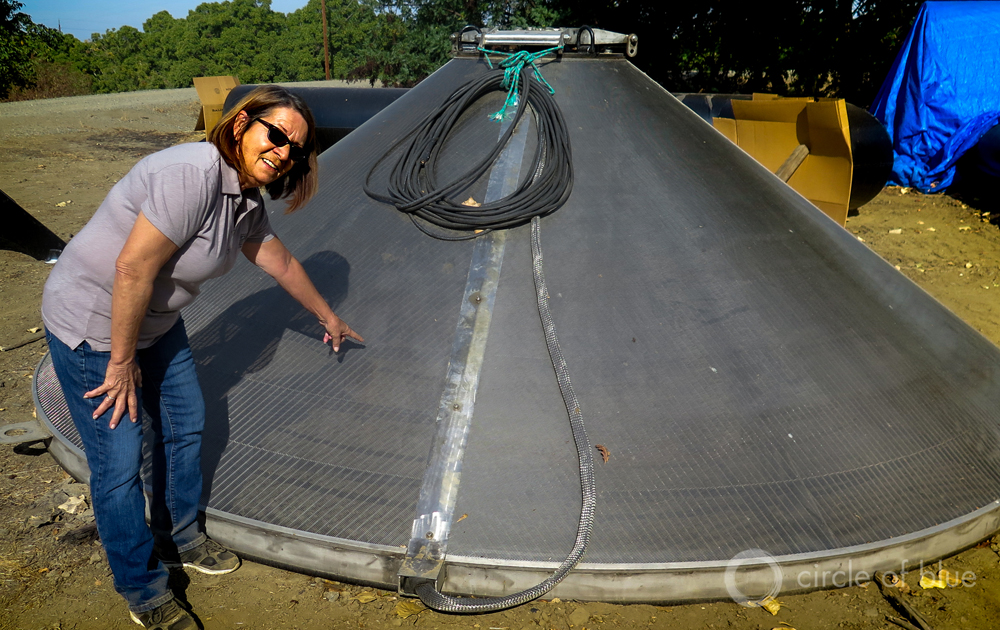
Debra Lemburg, the project manager who has worked in the Family Water Alliance’s salmon fish screen program since 1999, said the group raised over $US 13 million from state and federal wildlife agencies over the last two decades and installed 40 fish screens on the ends of irrigation water intake pipes on the Sacramento River and the Feather River, its principal tributary. Here she displays the tiny vents in a conical screen being installed on the Sacramento River. Photo © Keith Schneider / Circle of Blue
As in all aspects of the contest for natural resources in a state that has twice as many people as it did in 1970 and is enduring the fourth straight year of severe drought, the confrontation between farmers and fish, and the program to install fish screens, required important changes in how this farm community considered its responsibilities to fish, water, and the law.
“Put it in a package with a big bow on top,” explained Nadine Bailey, who joined the Family Water Alliance a year ago to be its chief operations officer. “We had to change.”
In 1973, California’s salmon runs on the Sacramento River were dwindling well below their historic levels. The big dams constructed after World War II on the headwaters of the Sacramento and other northern California rivers to store water and generate electricity impeded spawning fish. Irrigation pumps that killed salmon were also recognized as a factor. The salmon run was dying. That year, Congress approved the Endangered Species Act to provide powerful legal safeguards to prevent the extinction of species endangered as a “consequence of economic growth and development.”
Endangered Species Act In Play
In the late 1980s, federal wildlife authorities formally declared the Sacramento River’s salmon endangered and threatened, and began to move aggressively to save the fish. By then, the influence of the endangered species law was profoundly clear.
Put it in a package with a big bow on top. We had to change.”
–Nadine Bailey, chief operations officer
Family Water Alliance
Federal and state conservation agencies applied the law’s reach to recover populations of bald eagles, wolves, whales, falcons, and other animals heading to extinction. Federal jurists exhibited consistent allegiance to the act’s goals and issued stunning rulings to preserve wild habitat, prevent construction of big infrastructure installations, outlaw toxic chemical use, and take other actions that shut down development projects that put threatened or endangered animals at risk.
Federal and state authorities identified the water intake pipes and pumps of irrigation districts along the Sacramento River for improvement or removal. Many of the pump and pipe installations were constructed early in the 20th century in a way that attracted fish. Irrigation districts cut big sections and dug deep channels out of the river’s banks, allowing the water to form inlets large enough for their irrigation pipes. But the slack water in the inlets also proved irresistible resting places for fry and adult salmon seeking refuge from the river’s current. The systems sucked up unsuspecting fish, especially migrating juveniles.
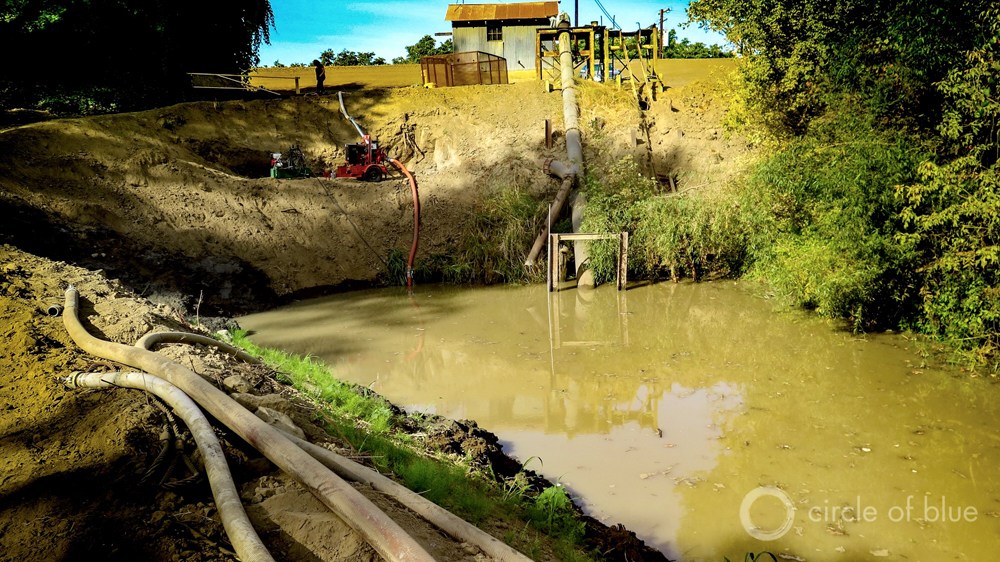
The Family Water Alliance is completing its newest fish screen on the banks of the Sacramento upriver from Colusa. The excavation is large enough to easily swallow two or three big suburban homes. Photo © Keith Schneider / Circle of Blue
In 1991, near the conclusion of a widely watched federal court showdown between the government and Colusa County farmers, U.S. District Judge David Levi issued a preliminary injunction to bar the Glenn-Colusa Irrigation District, the largest consumer of pumped water on the west side of the Sacramento River, from taking river water from mid-July to November 30. The order was designed to protect the downstream migration of salmon. It also meant that the 70,820-hectare (175,000-acre) irrigation district’s water supply would drop 300,000 acre feet annually, or 40 percent of its total water consumption.
The court order, stunning in its sweep, cheered conservationists and businesses supported by California’s salmon sport and commercial fishing industry, then valued at nearly $US 1 billion annually. Farmers and food industry executives, along with many Colusa County residents, were aghast. They could not fathom how an environmental law could put the interests of a fish above the needs of people and farmers who fed the nation and the world. Colusa County, after all, raised more rice than any county in California and exported its crop globally.
Judge Levi’s ruling was later amended to reduce the district’s water supply from the river by 25 percent annually for three years, providing time to develop a solution. That still reduced the irrigation district’s water supply 200,000 acre feet annually — an acre-foot is 1.2 million liters (326,000 gallons) — and many farmers vowed to fight the government action.
A Court Ruling, A Sound Response
But Sue Sutton and Marion Mathis, the wives of two Colusa County farmers dependent on the Glenn-Colusa Irrigation District for water, decided that fighting the court ruling, and the powerful alliance of environmental, conservation, and government institutions that supported it, was a strategy that would not reopen the water tap. They founded the Family Water Alliance in 1991 to advocate pragmatic steps to respond directly to Judge Levi’s decision, steps that included installing screens to reduce fish mortality.
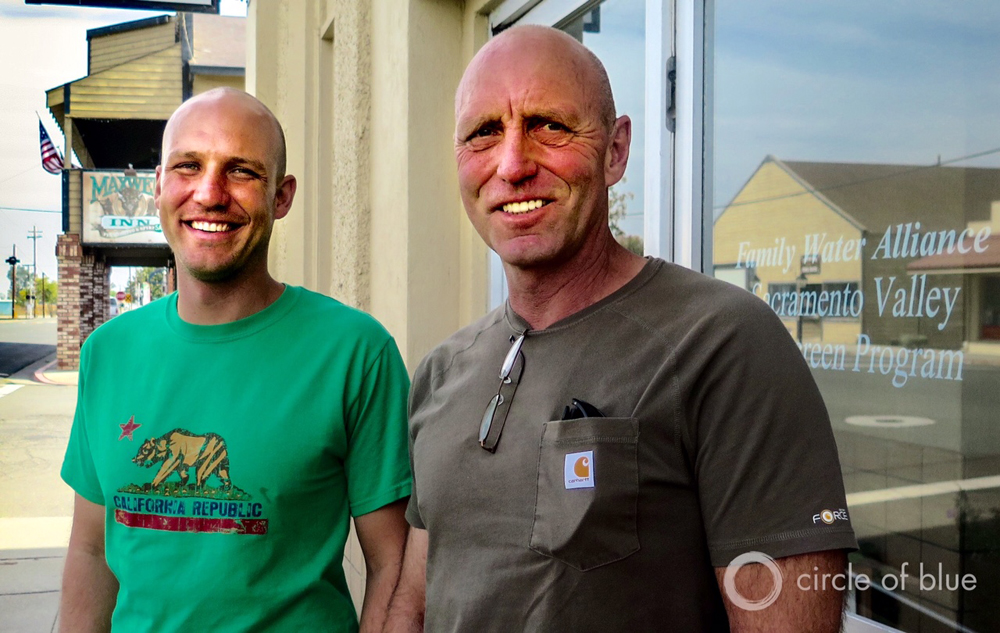
Russell Berry III, and his son Russell Berry IV, serve as the principals of Intake Screens, Inc., a Sacramento-based manufacturer of salmon screens. The Berrys also are managing the construction and installation facets of the Family Water Alliance’s $400,000 project upriver from Colusa. The company reflects the capacity to develop new economic activity by calming social strife and advancing ecological principals. Photo © Keith Schneider / Circle of Blue
“That wasn’t the most popular answer around here. People wanted to fight,” said Nadine Bailey. “A lot of people are still fighting. They want to change the Endangered Species Act. They want to amend it.
“There are some things about the law that could use some work. But there are people out there, including our members, who say they aren’t going to waste their time fighting it. We’re going to figure out how to live within those constraints and find solutions. That’s how the fish screen program came about. People can see the results. We’re helping fish. We’re bringing back fish populations. That’s a good thing. It’s good for the farmers. It’s good for the people who make their livings from those fish as well.”
In the southern regions of the Central Valley, some California farmers and farmworkers are rallying again this year to upend endangered species protections for salmon, the delta smelt, and several more threatened fish species that supporters assert are limiting water supplies for agriculture. California state water authorities are reserving the cold waters of California’s mountain reservoirs to support wildlife refuges and fish, and dramatically cutting supplies to farm irrigation districts. The “Take Back Our Water” campaign, organized by California Water for Food and People, has attracted the interest of Sean Hannity, the Fox News host. A rally in Sacramento is planned for January.
Here in Maxwell, a small byway of 1,100 residents surrounded by fields of harvested rice and orchards of walnuts and almonds awaiting harvest, Bailey and her two other staff colleagues at the Family Water Alliance watch the protest campaign in the South develop. They see it as an expression of social frustration and legal futility.
Meanwhile, the alliance is completing its newest fish screen on the banks of the Sacramento upriver from Colusa. The stainless steel screen, in the shape of a shiny grated funnel, lies on its wide mouth alongside an excavation large enough to easily swallow two or three big suburban homes.
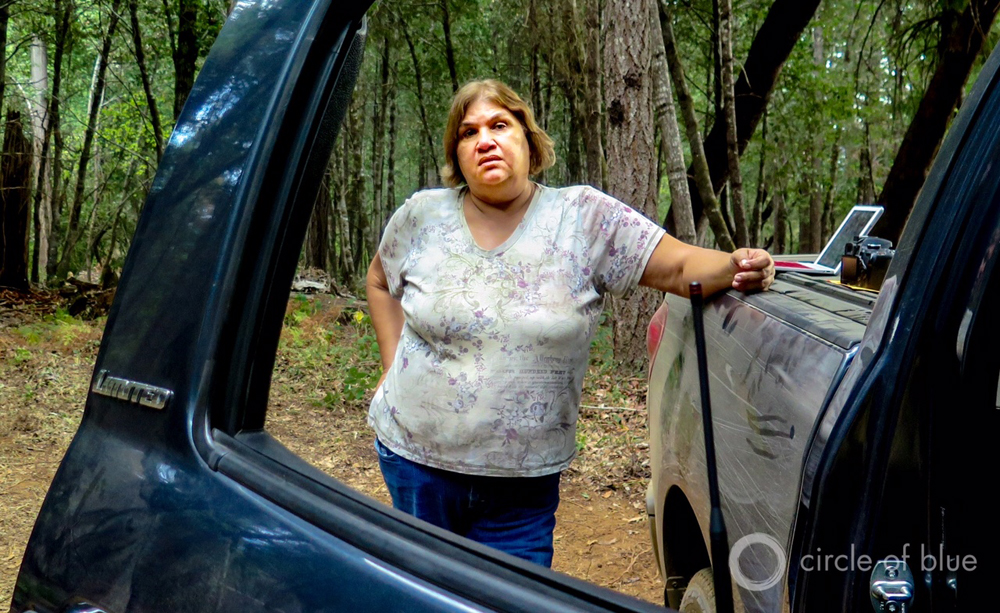
That wasn’t the most popular answer around here. People wanted to fight,” said Nadine Bailey, chief operations officer of the Family Water Alliance, describing community sentiment about the Endangered Species Act. “But there are people out there, including our members, who say they aren’t going to waste their time fighting it. We’re going to figure out how to live within those constraints and find solutions. That’s how the fish screen program came about. Photo © Keith Schneider / Circle of Blue
The screen was fabricated in Sacramento by Intake Screens, Inc., where Russell Berry III, and his son Russell Berry IV, serve as the principals. The Berrys also are managing the construction and installation facets of the $US 400,000 project. In an interview, the two explain that their screens are being bought and installed all over the West and the Midwest to respond to the requirements of the Endangered Species Act.
Intake Screens has built a solid business by protecting fish, they say. The company also reflects one more facet of this evolving story: the capacity to develop new economic activity by calming social strife and advancing ecological principals. That’s a fish story worth telling.
Circle of Blue’s senior editor and chief correspondent based in Traverse City, Michigan. He has reported on the contest for energy, food, and water in the era of climate change from six continents. Contact
Keith Schneider


